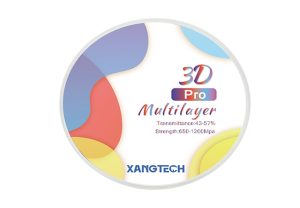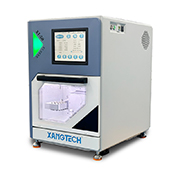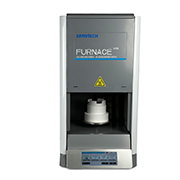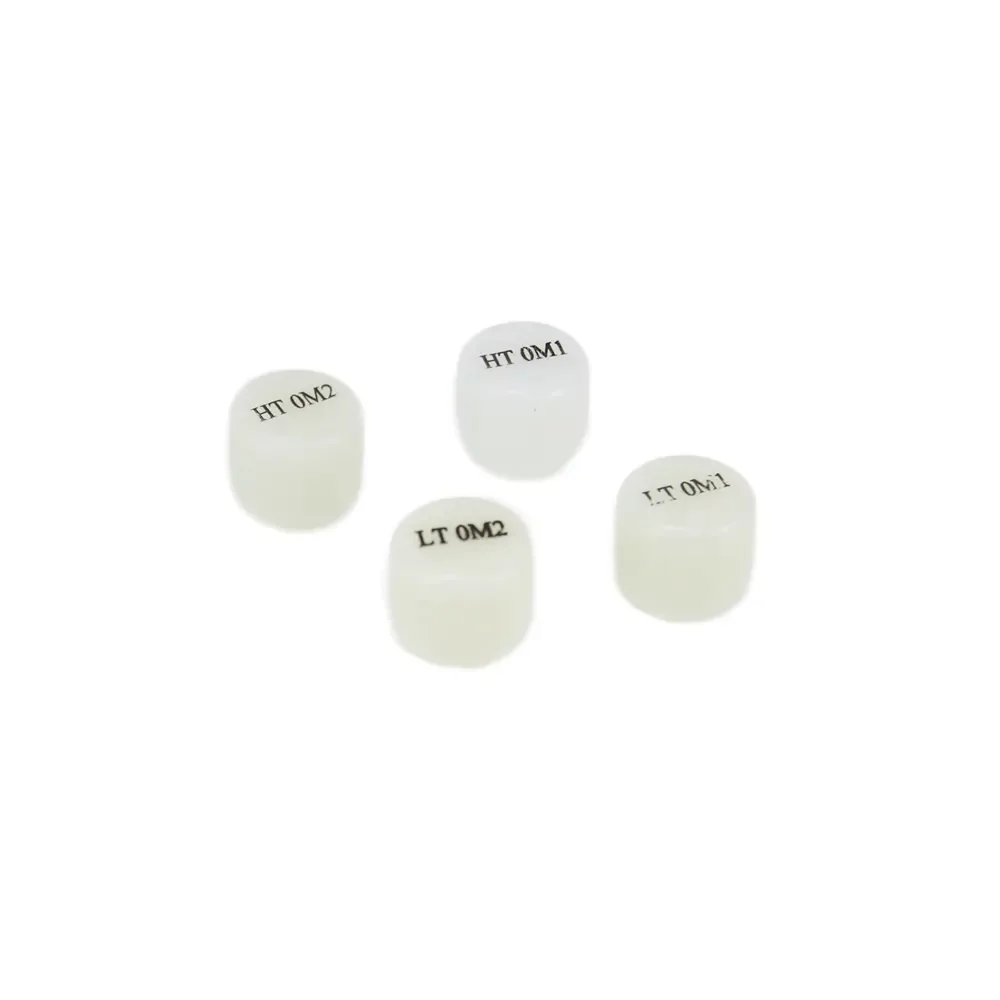Understanding Lithium Disilicate Blocks
What Are Lithium Disilicate Blocks?
Lithium disilicate blocks are a type of advanced ceramic material that are extensively used in modern dentistry for the production of dental restorations. Their optimal composition consists of lithium disilicate glass-ceramics, which are particularly known for their superior aesthetic properties: they are highly translucent and characterized by good match of the natural teeth color. This material allows constructing the entire array of restorations, from the anterior crowns to the posterior types. One of the most important advantages of this material is the high demand for the ability to mimic the natural dentition.
Properties of Transparent Lithium Disilicate
Transparent lithium disilicate blocks exhibit remarkable translucency, strength, and durability. They feature a unique crystalline structure that enhances their optical properties, allowing for light transmission similar to that of natural teeth. This characteristic not only improves the aesthetics of the restoration but also helps in blending seamlessly with the surrounding tooth structure. Additionally, these blocks possess a high flexural strength, typically around 400-500 MPa, which enables them to withstand the forces typically encountered in the oral environment, ensuring longevity and reliability.
Choosing the Right Product
Features of XANGTECH’s Lithium Disilicate Blocks
Lithium disilicate blocks produced by XANTHECH are unique due to their properties that make the product excellent for restorations. Moreover, these products are produced using advanced techniques that enable their quality to be constant and their performance to be increased. One should note that the level of translucency and strength can be considered high, which is essential for achieving natural aesthetics. XANGTECH’s products are produced in different sizes and shades so that solutions can be customized in order to meet customers’ needs. The use of the latest technology in the production process improves milling properties, and as a result, one can obtain extremely accurate dimensions that are useful for various dental applications.
Comparing Different Brands
When selecting lithium disilicate blocks for dental applications, it is crucial to compare the specific features and benefits offered by different brands. While some brands may provide similar properties, the quality of the material, ease of milling, and compatibility with existing dental systems can vary significantly. Evaluating the specifications, performance in clinical trials, and feedback from dental professionals regarding the blocks can aid practitioners in making an informed decision. XANGTECH, for instance, provides detailed product information and guidelines to assist dental experts in choosing the most suitable lithium disilicate blocks for their specific purposes.

Preparing for Use
Equipment and Tools Required
The milling of the lithium disilicate blocks into appropriate restoration forms necessitates the use of a high-quality CAD/CAM milling machine that could replicate the designs of the CAD software. The dentists must also use proper software to ensure that the designing of such restorations is as smooth as possible. The finishing process requires the use of diamond burs while the sintering furnace is used for optimal thermal processing. Finally, the polishing kits are used to provide the final desired aesthetic characteristics. As such, it is apparent that the equipment used helps to ensure that the best end product is produced.
Safety Precautions
Taking safety precautions is crucial when working with lithium disilicate blocks. It is advised that professionals equip appropriate personal protective attire, including gloves and a mask, to decrease exposure to particles and chemicals during the milling and finishing operations. In addition, keeping the workspace clean and organized ensures safety and prevents any materials from mixing with others. Furthermore, it is important for dental technicians to comply with the manufacturers’ instructions on handling and processing these blocks. Overall, creating safety precautions increases the level of safety in the workplace and improves the quality of dental restorations.
Cutting and Shaping Guidelines
Recommended Tools and Equipment
Utilizing the right tools and equipment is essential for achieving optimal results when working with lithium disilicate blocks. Dental milling machines equipped with precise software can effectively produce restorations that adhere to the desired specifications. Additionally, polishing tools made for ceramics should be utilized to achieve a smooth finish and enhance the aesthetics of the final restoration.
Techniques for Precision Cutting
Adopting appropriate techniques for precision cutting is crucial for the effective use of transparent lithium disilicate blocks. Slow, careful cutting motions can allow for detailed adjustments and reduce the risk of damage. Furthermore, mapping out the restoration design prior to milling can streamline the process and ensure that the final product aligns with the intended outcome.
Installation Guidelines
Bonding Techniques
Summary Adhesive bonding of lithium disilicate restoration is important to provide its long-lasting and reliable performance. However, the choice of adhesive championing bonding protocol is associated with the success of the restoration on practice. Considering the peculiarities of the restoration, the location of its application in the month, whether it is an anterior or posterior restoration, different bondings will be required. If the latter follows the credible bonding guidelines, including etching and silanization, successful retention will be achieved.
Adhesive Options
There are a number of materials that can be selected when choosing an adhesive for lithium disilicate block. Self-adhesive resin cements provide both ease of use and secure bonding while dual-cure or light-cure resin cement may provide more versatility for the most complicated of cases. The location and function of the restoration and any occlusal stress that it may be subjected to are also factors that critics. Overall, one must take all of these differing factors into consideration in order to strike a balance between esthetic and superstructure function.
Steps for Effective Bonding
Regarding the effective process of bonding of lithium disilicate restorations, a comprehensive understanding of both the material and bonding protocols is required. To accomplish the task, first, it is necessary to cleanse and condition the surfaces of both the tooth and restoration. For this, the internal surfaces may be etched and treated with a silane coupling agent. Then, a selected adhesive should be applied following the manufacturer’s recommendations and applied to achieve full coverage and avoid voids. Finally, light-cure or set the adhesive based on the material and residual stresses coherent to the clinical situation. It can be maintained that attention to details in all these processes may facilitate and enhance the bonding outcome.
Troubleshooting Common Issues during Installation
Problems of installing LD restorations Patients with fishmouth-related problems might have trouble finding suitable professionals to handle their situations. The use of lithium disilicate restorations may also come with an array of problems likely to affect dental professionals. For instance, bonding may be insufficient when the surface preparation is not well done and when the wrong adhesive is used in the restoration process. There are also chances of misaligning the restoration, which means that adjustments may have to be made on the installed restoration. To solve the problem, the professional should be keen during the verification phase of the installation process, prepare adequately, and understand potential challenges.
Maintenance of Lithium Disilicate Restorations
Routine Care and Cleaning
Recommended Products
The choice of cleaning products is fundamental in supporting the integrity and aesthetics of lithium disilicate restorations. Typically, dental professionals recommend non-abrasive cleaners intended for ceramic materials. Moreover, the pH level of the cleaner should be balanced to avoid damage to the surface glaze. An alternative approach is present in the use of ultrasonic cleaners, as they can remove plaque and debris from the restoration without exerting an impact on the surface structure.
Best Practices to Avoid Damage
Preserving lithium disilicate restorations is possible if a patient adheres to stages of care that include proper maintenance. Specific best practices revolve around patients’ awareness of how they should not struggle with their cleaning. A proper plan includes the ability to avoid abrasive toothpastes or severely pressing toothbrushes onto restorations. The same is said about mouth rinses containing alcohol and other inappropriate substances. The last important best practice related to the issue is to visit the dental office at least once in six months. At that time, all aftercare failures or any small issues with the restoration can be identified and resolved accordingly.
Repairing Damaged Restorations
If a lithium disilicate restoration is damaged, it must be promptly remedied to be functional and aesthetic. If the damage is minor, the defect can often be repaired with the aid of bonding agents or dental cement; the professional may also polish the damaged area to ensure esthetics. When the damage is significant, however, dental practitioners may have to turn to a tried and true method of repair for this type of restoration, that is, removing the restoration and replacing it with an entirely new lithium disilicate block. Overall, the damage to lithium disilicate restorations must be carefully assessed on a case-by-case basis so that the most efficient method of repairing is selected.
Innovations in Transparent Lithium Disilicate Technology

Latest Research Developments
The advancement of technology has changed modern dentistry significantly. As a modification of the conventional lithium disilicate material, the chemically strengthened version provides a better state of the art. More advanced manufacturing techniques are often studied, including additive manufacturing. As new methods help improve the properties of the material, another focus remains on developing approaches to increase the restorative strength of custom and prefabricated devices. Research in this area explores ways of incorporating new materials in the existing ones to enhance the longevity and overall performance.
Emerging Trends in Application
The emerging trends in the application of lithium disilicate blocks are related to minimally invasive dentistry and increasingly used digital workflows. More dental professionals decide to apply chairside CAD/CAM systems and create restorations designed individually during a single appointment, which improves the convenience of intervention for patients and the efficiency of their treatment. Besides, nowadays, the interest in the use of lithium disilicate material with other restorations, including zirconia, to achieve the most functional and aesthetic outcomes, is increasing. This demonstrates that, on the one hand, the applications of lithium disilicate can be broadened, and, on the other hand, innovations in restorative dentistry are essential.
Future Trends in Dental Materials
Advances in Material Science
The field of dental materials continues to evolve, with ongoing research and development focused on improving the properties of materials like lithium disilicate blocks. Advances in material science are expected to yield products with evendental materials greater strength, durability, and esthetic qualities. Innovations in nanotechnology and biocompatibility may also pave the way for materials that promote better integration with natural tissues, presenting opportunities for enhanced patient care and outcomes. As researchers explore novel compositions and manufacturing techniques, the potential for breakthroughs in lithium disilicate formulations will undoubtedly transform the landscape of restorative dentistry.
How XANGTECH Innovates with New Technologies
XANGTECH remains at the forefront of innovation in the dental materials sector by integrating cutting-edge technologies into their manufacturing processes. Their continuous commitment to enhancing the quality of lithium disilicate blocks ensures that dental professionals receive products that meet the highest standards for strength and aesthetics. By collaborating with research institutions and engaging in extensive testing, XANGTECH is dedicated to responding to the evolving needs of the dental community. Embracing advancements such as digital dentistry and CAD/CAM systems, XANGTECH facilitates improved workflows that enhance efficiency and precision, ultimately leading to better patient outcomes.











